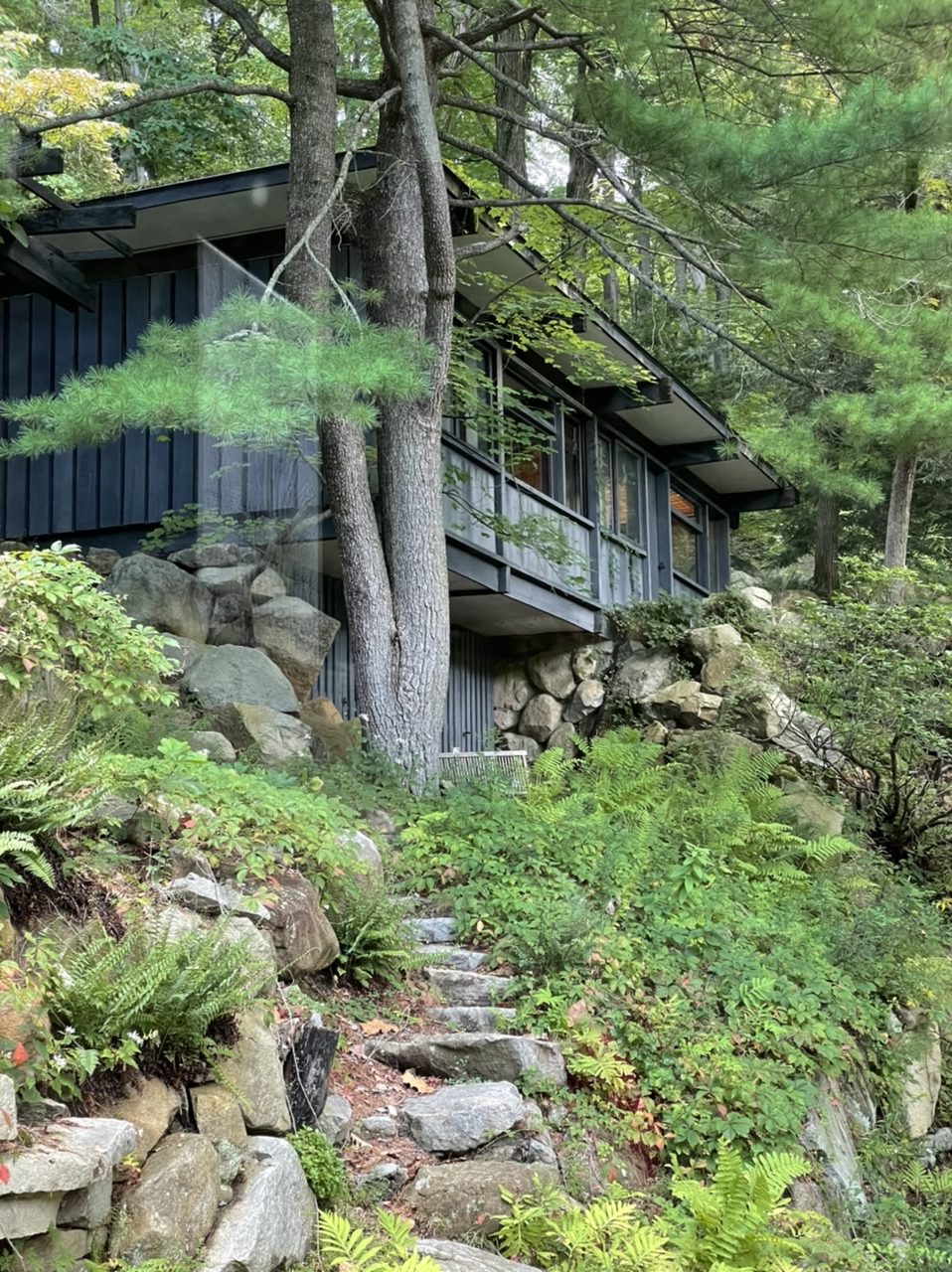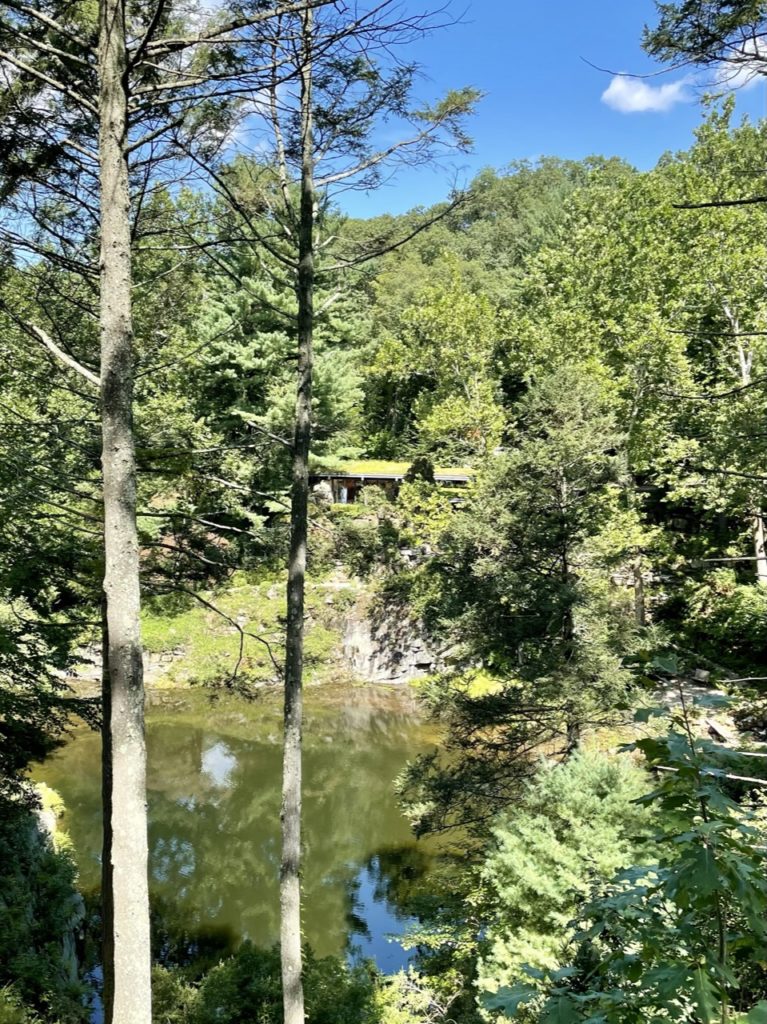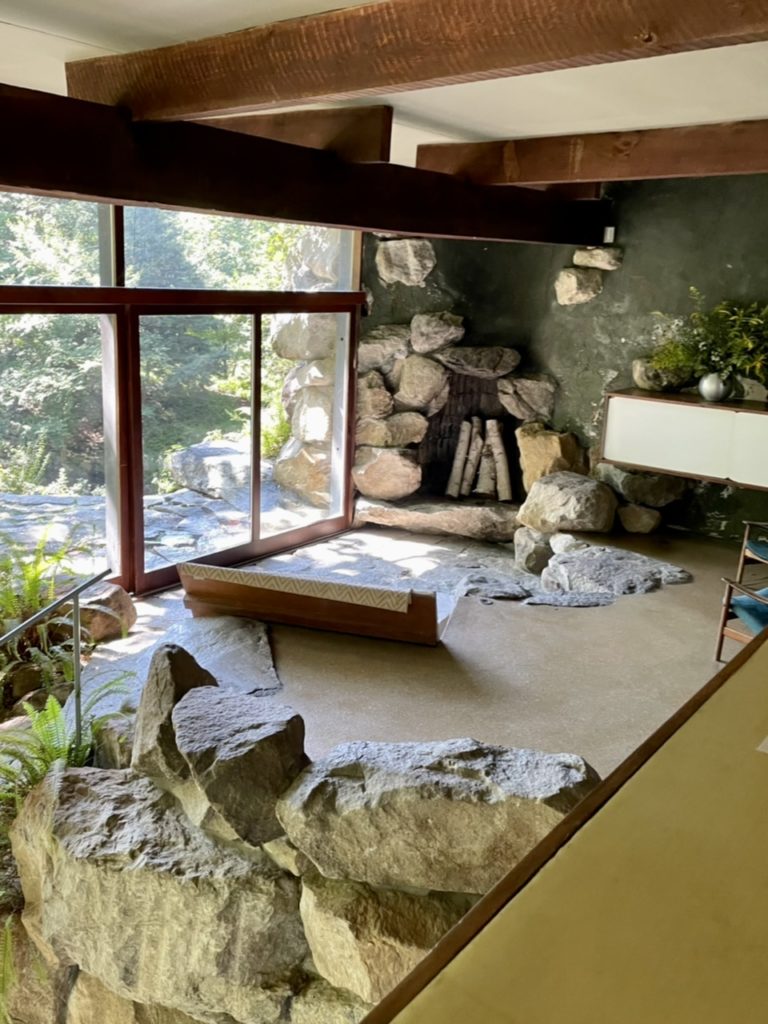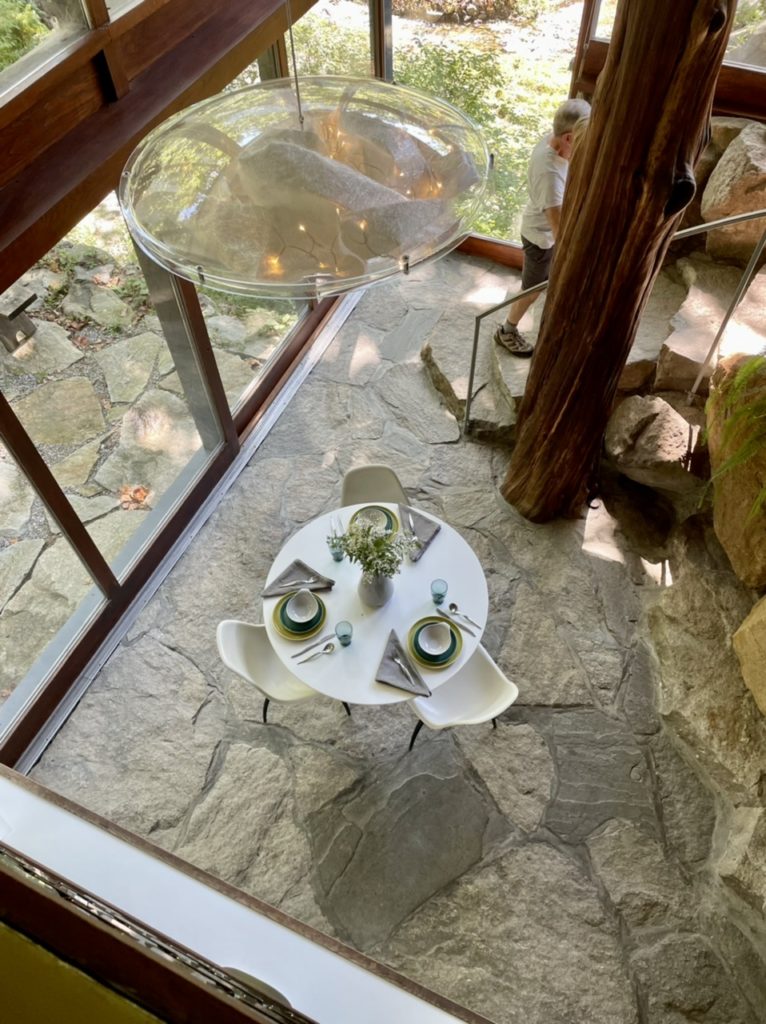Recently we visited Manitoga, a National Historic Landmark that is the studio and home of industrial designer Russel Wright. A prime advocate of what has been called “Livable Modernism,” Wright, with the aid of his wife, Mary, became one of the most influential and well-known designers of the 1930s to 1950s. His pottery, tableware, and furniture brought Modernism to the American masses (quite literally: his most popular line of pottery and one of his furniture lines were both named American Modern).
Together, they wrote the 1950 manifesto Guide to Easier Living which promoted radical ideas like “buffet suppers, one-pot meals, portable seating and lots of double-duty storage…They may be the inventors of modern grad student storage: wooden shelves on cinder blocks hidden behind a curtain” (Alexandra Lange, “Easier Living, By Design”, The New York Times July 23, 2010).
Manitoga came later in his career. He and Mary purchased the land in the Hudson Highlands north of New York City around 1942 and spent many years modifying the landscape, including turning an abandoned quarry pit into a swimming pond complete with a waterfall.
They lived in a cottage (still standing, but not part of the Landmark) next to the quarry. It was not until several years after Mary’s death in 1952 that Russel began building the house and studio (designed with architect David Leavitt). It was completed in 1960 and Russel lived there with his daughter Annie and her governess/housekeeper until his death in 1976.
Dragon Rock is a rare instance of Mr. Wright contradicting his theory of “easier living,” — his daughter, Anne, recalls arduous hours spent vacuuming the rocks and keeping all 11 levels in some semblance of order.
Richard Horn, “Collecting Russel Wright” The New York Times August 23, 1979.











